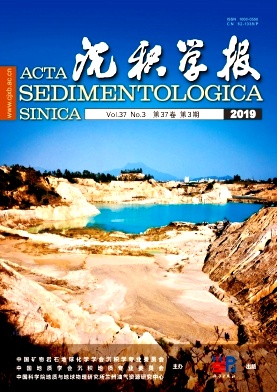Hydrochemical Characteristics and Origin of Deep Pore Brine Deposits in Mahai Baisn
doi: 10.14027/j.issn.1000-0550.2018.160
- Received Date: 2018-01-23
- Rev Recd Date: 2018-08-01
- Publish Date: 2019-06-10
-
Key words:
- Mahai Basin /
- sandy gravel /
- pore brine /
- hydrochemistry characteristics /
- origin analysis
Abstract: Analysis of the hydrochemical characteristics and origin of deep sandy gravel brine in Mahai Basin is based on mathematical statistics, cluster analysis, and ion characteristic coefficients. The spatial distribution characteristics of brine ion concentrations shows that the ion concentrations of pH, Cl-, TDS, and Na+ have a narrow range of change and uniform distribution, while the ion concentrations of K+, Rb+, Br-, Mg2+, Li+, Sr2+, I-, B2O3, Ca2+, Cs+, NO3-, and SO42- exhibit significant variation and uneven distribution. Cluster analysis indicates that Cl-, TDS, Na+, K+, Mg2+, Li+, and SO42- piled, which shows the evolution of brine is related to the joining of acid liquid. K+, which has correlation with Mg2+ and Li+, shows an increasing trend from west to east in the variety graph of ion contents. The characteristic coefficients and higher contents of trace ions suggest that the brine has multifocal features of evaporation residue and gypsum dissolution. The Na+, K+, and Mg2+//Cl--H2O four-element system mesostationary phase, as well as the analysis of ionic characteristic coefficients in brine, indicate that the hydrochemical type is the single chloride-type, which reflects the single provenance and may have a relationship with the stochastic underlying salt strata of the Pleistocene.
| Citation: | YUE Xin, LIU XiXi, LU Liang, ZHANG XiaoDong, FAN ZengLin, YU XiaoLiang. Hydrochemical Characteristics and Origin of Deep Pore Brine Deposits in Mahai Baisn[J]. Acta Sedimentologica Sinica, 2019, 37(3): 532-540. doi: 10.14027/j.issn.1000-0550.2018.160 |






 DownLoad:
DownLoad: